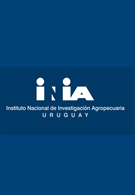ABSTRACT. Visible (VIS) and near infrared (NIR) reflectance spectroscopy combined with multivariate data analysis were explored to predict fibre diameter in both clean and greasy Merino wool samples. Fifty clean and 400 greasy wool samples were analysed. Samples were scanned in a large cuvette using a NIRSystems 6500 monochromator instrument by reflectance in the VIS and NIR regions (400 to 2500 nm). Partial least square (PLS) regression was used to develop a number of calibration models between the spectral and reference data. Different mathematical treatments were used during model development. Cross validation was used to assess the performance and avoid overfitting of the models. The NIR calibration models gave a coefficient of determination in calibration (R 2) > 0.90 for clean wool samples and a R2

